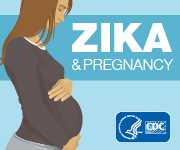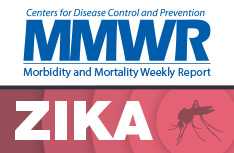Laboratory Safety when Working with Zika Virus
Introduction
Zika virus is a member of the Flaviviridae family and the genus Flavivirus (which includes yellow fever virus, West Nile virus, Japanese encephalitis virus, and dengue virus). It is enveloped and icosahedral with a non-segmented, single-stranded, positive-sense RNA genome. Infection of humans with Zika virus usually results in a mild illness with symptoms lasting for several days to a week. Although most infections are asymptomatic, common symptoms of Zika virus infection include rash, joint pain, conjunctivitis, and fever. Severe disease requiring hospitalization is uncommon and deaths are rare.
Zika virus is primarily transmitted to humans through the bite of an infected Aedes species mosquito. Evidence suggests that transmission may also occur from mother to child in utero, through sexual contact, or through blood transfusion. Updates on Zika virus transmission can be found at the CDC Zika virus website.
Transport and Handling of Diagnostic Specimens
- Transport
- Cultures of Zika virus and specimens collected from individuals for Zika virus studies may be transferred within the U.S. as Category B Biological substances in accordance with Department of Transportation Hazardous Materials Regulations (49 CFR Part 171-180). Guidance for packaging samples in accordance with Category B Biological substance requirements can be found in the CDC/NIH Publication Biosafety in Microbiological and Biomedical Laboratories, 5th edition (BMBL5). Additional information about the Department of Transportation Hazardous Materials Transport Regulations.
- Importation
- CDC Import Permit. A CDC Import Permit is required to import Zika virus and specimens for Zika virus testing into the United States. The CDC Import Permit regulations are found at 42CFR Part 71.54, and information on obtaining a CDC Import Permit.
- USDA Permit. A USDA Permit is required for the importation of arthropods (infected or uninfected) that could serve as vectors for Zika virus transmission, and may be required for importation and subsequent transfer of other Zika virus-containing materials. Guidance on the requirements for USDA Permits for specimens associated with Zika virus is available via the internet; via Email at OV@aphis.usda.gov; by phone at 301-851-3300, option 3; and by FAX at 301-734-3652.
- Handling of diagnostic specimens. Specimens from individuals suspected of having Zika virus infection should be handled in accordance with the Healthcare Infection Control Practices Advisory Committee Standard Precautions Standard. These include the use of gloves, a laboratory gown or coat, and eye protection when handling these specimens. In general, Biosafety Level 2 precautions, as described in the CDC/NIH Biosafety in Microbiological and Biomedical Laboratories manual, 5th edition (BMBL5) are appropriate for the handling of these specimens.Laboratories should perform a risk assessment to determine if there are certain procedures or specimens that may require higher levels of biocontainment. For example, potential aerosol generating procedures should be performed in a biological safety cabinet. Specimens for which chikungunya virus is also a concern, since this virus is known to produce high levels of viremia, may also require higher levels of biocontainment. Guidance for procedures with culture/serum specimens suspected of having or containing chikungunya virus English [PDF – 6 pages] | Spanish [PDF – 6 pages].
Working with Zika Virus in the Laboratory
- General laboratory procedures. Zika virus preparations may be handled under Biosafety Level 2 precautions, as described in the BMBL5. Laboratories should perform a risk assessment to determine if there are certain procedures or specimens that may require higher levels of biocontainment (e.g., use of a biosafety cabinet for potential aerosol generating activities or suspicion that the specimen may contain a pathogen that requires BSL3 precautions). Experiments involving recombinant or synthetic Zika virus nucleic acids should be done in accordance with the NIH Guidelines for Research Involving Recombinant or Synthetic Nucleic Acid Molecules.
- Studies involving vertebrate animals. Animal studies involving Zika virus may be performed under Animal Biosafety Level 2 precautions, as described in the CDC/NIH BMBL5. A risk assessment should be performed to determine if there are certain procedures that may require higher levels of biocontainment such as those that could potentially create aerosols.
- Studies involving infected arthropods. In areas where the Zika virus has not been established in the mosquito population, in order to reduce the risk of environmental establishment, Arthropod Containment Level 3 (ACL-3) should be used for all work with live, infected arthropods. In areas where the Zika virus is established in the resident mosquito population, it is recommended that ACL-2 be used for all work with live, infected arthropods. Information on Arthropod Containment levels from the American Committee for Medical Entomology.
Occupational Health Issues related to Work with Zika Virus
- Association with congenital anomalies. Until the association between Zika virus infection and congenital anomalies, including microcephaly, is better understood, pregnancy should be considered a significant factor in risk assessment for individuals working with Zika virus, and the involvement of pregnant workers in studies with Zika virus should be minimized. Workers with partners who are pregnant or are considering pregnancy should be aware of the risk associated with sexual transmission of Zika virus. Information related to Zika virus transmission.
- Association with Guillain-Barré syndrome. Guillain-Barré syndrome (GBS) is an uncommon illness involving the nervous system in which a person’s own immune system damages the nerve cells, causing muscle weakness, and sometimes, paralysis. The Brazil Ministry of Health has reported an increased number of people who have been infected with Zika virus who also have GBS. CDC is working with Brazil to study the possibility of a link between Zika virus and GBS. More information on Zika virus and GBS.
References
- CDC/NIH Biosafety in Microbiological and Biomedical Laboratories, 5th edition
- CDC Import Permit Program
- Organisms and Vectors Program, Animal and Plant Health Inspection Service, USDA
- Standard Precautions Standard, Healthcare Infection Control Practices Advisory Committee
- NIH Guidelines for Research Involving Recombinant or Synthetic Nucleic Acid Molecules
- Arthropod Containment Standard, American Committee for Medical Entomology
- Guillain-Barré syndrome Q & A
- Interim Guidance for Protecting Workers from Occupational Exposure to Zika Virus [PDF – 7 pages]
- Page last reviewed: April 27, 2017
- Page last updated: April 27, 2017
- Content source:





 ShareCompartir
ShareCompartir